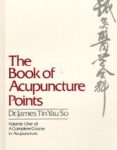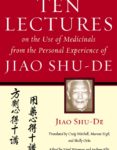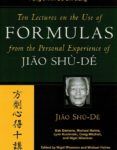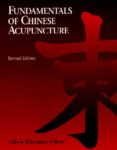Overview
The Jīn Guì Yào Lǜe (“Essential Prescriptions of the Golden Cabinet”), like its sister volume the Shāng Hán Lùn (“On Cold Damage”), is a gem reconstituted from fragments of a lost text called the Shāng Hán Zá Bìng Lùn (“On Cold Damage and Miscellaneous Diseases”) by indisputably the most brilliant medical mind that China ever produced, the Hàn Dynasty physician Zhāng Jī (Zhāng Zhòng Jǐng). Exerting an influence on the development of Chinese medicine unmatched by any other medical scholar, Zhāng integrated the then relatively new theories of systematic correspondence of the Nèijīng and Nànjīng with an already vast practical knowledge knowledge in the use of medicinals. Such was his brilliance that it was not fully recognized by Chinese physicians until centuries later in the Sòng Dynasty, when Zhāng’s combination of theory and practice became the mainstream in Chinese medicine that survived centuries of scrutiny from successive generations of medical scholars and buttressed traditional medicine against the challenge of Western in the twentieth century. Combining theoretic etiologies with detailed diagnosis and skillfully devised treatments, Zhāng’s work has left an indelible print on traditional medicine in China for nearly 2,000 years. A third of the most commonly used formulas in Chinese medical practice today were devised by Zhāng Jī.
The Jīn Guì Yào Lǜe covers diseases other than the external contractions dealt with in the Shāng Hán Lùn, and includes lung diseases, water swelling, dissipation-thirst, impediment (bì), summerheat stroke, mounting diseases, and gynecological diseases, to name just a few. It is presented in 25 chapters, most of which deal with two or three closely related diseases; however the final three chapters cover miscellaneous formulas and foodstuffs. Each chapter includes an introduction to the material, followed by the original lines of the text, which are rendered in simplified Chinese characters, Pīnyīn, and English translation. This is followed by notes to elucidate obscure phrases in the original text, a synopsis of the content of the line, and detailed explanatory commentaries.
Textual History (from the Introduction by Sabine Wilms)
As its title suggests, Zhāng Zhòng-Jǐng’s Shāng Hán Lùn discusses the diagnosis and treatment of cold damage conditions, which are conditions related to external contraction, especially of wind and cold. His Jīn Guì Yào Lüè is thought to reflect that section of the original Shāng Hán Zá Bìng Lùn that was called “miscellaneous diseases” (杂病 zá bìng), basically a catch-all phrase for any conditions which could not be traced to externally contracted evils. The full title of this present text is Jīn Guì Yào Lüè Fāng Lùn, “Essential Prescriptions and Discussions from the Golden Cabinet.”This title tells us several things about the book. First, it is an indication of the value that the author (or more accurately, the person who named the text as such) placed on the book’s content. “Golden Cabinet” refers to a cabinet-like storage box made of gold, hence a place where a person of great wealth would store his or her most valuable items. Second, the text is characterized as containing both “prescriptions” and “discussions,” or in other words, clinical as well as theoretical information. This combination positions it at an interesting fulcrum in the textual history of Chinese medicine, namely the intersection between theoretical classics like the Huáng Dì Nèi Jīng (“Yellow Emperor’s Inner Canon”) and Nàn Jīng (“Classic of Difficult Issues”), which were mostly concerned with the flow of qì and blood through the vessels and the correlation of the human body to the macrocosm, and formulary collections like the Qiān Jīn Fāng (“Thousand Gold Pieces Prescriptions”) by Sūn Sī-Miǎo, which primarily matched lists of symptoms to specific formulas without providing any diagnostic or etiological explanation for the rationale behind a treatment. By contrast, the Jīn Guì Yào Lüèincludes detailed diagnostic guidelines and etiological reasoning in addition to instructions for treatment primarily with medicinal formulas (and some references to acupuncture, moxibustion, and other therapeutic modalities). Zhāng Zhòng-Jǐng thus created a medical classic with outstanding significance for both theory and practice, centuries before other medical authors attempted to follow in his footsteps during the Sòng period.
Due to the turbulence of its historical times, it is impossible to reconstruct the exact format, content, and organization of Zhāng Zhòng-Jǐng’s work today. Nevertheless, its significance for the history of medicine and its applicability in modern clinical practice has inspired much research, especially in China, to approximate its original form as much as possible on the basis of later reprints, fragments that have been recovered in China and Japan in archaeological sites, and quotations in received texts.
By order of the Sòng Imperial court in the 11th century, both the Shāng Hán Lùn and the Jīn Guì Yào Lüè were included among a small selection of early Chinese medical classics to be collated, annotated, and reissued in woodblock print. This monumental effort was completed by a large editorial team from the Office for the Correction of Medical Texts, which had been established in 1057 CE. While these scholars had access to the ten scrolls of the Shāng Hán Lùn which had been edited by Wáng Shū-Hé, the part on “miscellaneous diseases” had not survived. Instead, they painstakingly had to recreate the Jīn Guì Yào Lüè on the basis of quotations found in other medical classics like the Mài Jīng (“Pulse Canon”), Zhū Bìng Yuán Hòu Lùn (“Origin and Indicators of Disease”), and Qiān Jīn Fāng (“Thousand Gold Pieces Prescriptions”), as well as a summary of Zhāng Zhòng-Jǐng’s work in three scrolls entitled Jīn Guì Yù Hán Yào Luè Fāng (“Essential Prescriptions from the Golden Cabinet and Jade Sheath”). These Sòng editors matched the prescriptions with the descriptions of symptoms, arranged the text by disease categories into 25 chapters in three parts, and lastly added select outstanding prescriptions by other physicians of the times, all with the goal of making this text as clinically useful as possible. This Sòng revision has been the standard version of the text ever since, and also the version on which subsequent editions such as this one are based. It is thus important for the discerning reader to keep in mind that we are looking at a Hàn dynasty text that was lost for several centuries and reconstructed, rearranged, and supplemented by Sòng dynasty scholars approximately eight hundred years later.
Authors
Zhang Ji (Zhang Zhong Jing) is well-know in modern Chinese medicine but little is know about his personal history. He is said to have been born in Changsha in about 150CE and to have died in 216CE. As the author of the Shāng Hán Lùn (Treatise on Cold Damage) and the The Jīn Guì Yào Lǜe(Essential Prescriptions of the Golden Cabinet) his influence on Chinese medicine persists to today.
Nigel Wiseman
Translator: Ten Lecutres on the Use of Formulas from the Personal Experience of Jiao Shu De
Author: Chinese Grammar for Life, Chinese Medical Characters Volume 1 to 5, Chinese Medicine Grammar and Vocabulary, Concise Chinese Materia Medica, Fundamentals of Chinese Acupuncture, Fundamentals of Chinese Medicine, Grasping the Wind, Introduction of English Terminology of Chinese Medicine, Jin Gui Yao Lue, A Practical Dictionary of Chinese Medicine,.
Nigel Wiseman received his bachelors degree in simultaneous German and Spanish interpretation and translation from Harriot Watt University in 1976, and his PhD in Complementary Medicine from the University of Exeter in 2000. He resides in Taiwan where he is a faculty member at Chang Gung University. He is an editorial board member of the Journal of Chinse Medicine (ROC), The China Medical College Journal (ROC), and Clinical Acupuncture and Moxibustion Journal (UK). He serves on the terminological standards committees of the People’s Republic of China and the World Health Organization.
Sabine Wilms
Translator: Ten Lecutres on the Use of Formulas from the Personal Experience of Jiao Shu De, The Jīn Guì Yào Lǜe (“Essential Prescriptions of the Golden Cabinet”
After undergraduate training in her native Germany, Sabine Wilms spent two years in Taiwan, studying modern and classical Chinese language. She then moved to the US for her graduate studies and has mostly lived there since. Sabine has been studying classical Chinese writings on medicine beginning with her PhD education in Asian Studies and medical Anthropology. With a strong academic background in early Chinese philosophy, science, cosmology, and language and therefore in a historically and culturally sensitive approach to Chinese medicine, she now enjoys studying and teaching it as a living, effective, ever-changing, and much needed response to the issues of our modern times. Some of her favorite topics are gynecology and reproduction, pediatrics, medical ethics, self-cultivation, and “nurturing life.” Besides teaching at the School of Classical Chinese Medicine at the National College of Natural Medicine in Portland, Oregon, and creating books on Chinese medicine through her publishing company, Happy Goat Productions, she is raising a daughter and some dogs, chickens, goats, fruits, and vegetables.
Translated by Nigel Wiseman; Sabine Willaims
Praise
“Wiseman and Wilms have exquisitely translated the Jīn Guì Yào Lüè. The English rendering is impeccable, precise, and consistent. The detailed commentaries are systematic and comprehensive. Throughout my forty-six years as a clinician I have studied Zhāng Jī’s writings and prescribed formulas from the Shāng Hán Lùn and Jīn Guì Yào Lüè. I hope that this remarkable work in its English translation will help you to draw upon the genius of Zhāng Jī and to understand and utilize the depth of his knowledge of Chinese medicine.”
Miki Shima, OMD, L.Ac., President, Japanese‐American Acupuncture Association; Former Member, California State Acupuncture Examining Committee; Former President, California Acupuncture Association; Author, Expositions on the Eight Extraordinary Vessels; Channel Divergences – Deeper Pathways of the Web; The Medical I Ching: Oracle of the Healer Within; Recipient, Lifetime Achievement Award, American Association of Acupuncture and Oriental Medicine (2004).
Visited 2586 times , 1 Visits today






This is one of the most important books in Chinese medicine and this translation is particularly important because it includes both the Chinese text and commentaries. Furthermore, because the translation is based on a published term set, readers are assured that the English rendering is as close to the Chinese meaning as can be accomplished with such a text.